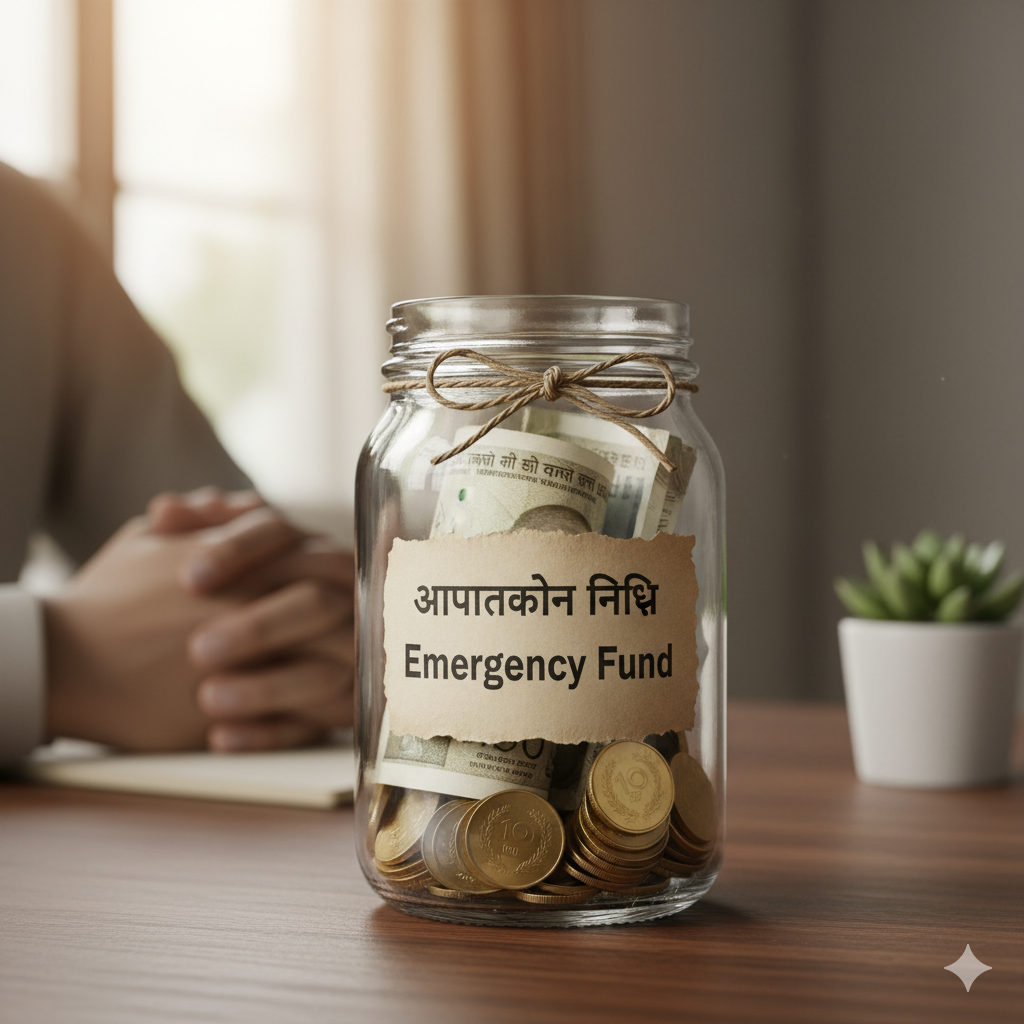Building a Strong Financial Foundation in India: Beyond Credit Cards
In today’s fast-paced world, it’s easy to get caught up in the allure of immediate gratification – the latest gadgets, spontaneous trips, or dining out every weekend. Credit cards, while offering convenience and rewards, can often seem like the primary tool for managing our finances. However, true financial well-being, especially in a dynamic economy like India’s, goes far deeper than plastic. It’s about establishing a robust foundation that provides security, enables growth, and empowers your future.
Let’s explore the essential pillars of building a strong financial foundation in India, looking well beyond your credit card statement.
1. The Bedrock: Emergency Fund – Your Financial Safety Net
Life is unpredictable. Job loss, medical emergencies, or unexpected home repairs can derail even the most meticulously planned budgets. This is where an emergency fund becomes your first line of defense.

- What it is: A pool of readily accessible cash, separate from your regular savings or investments.
- How much: Aim for 3 to 6 months’ worth of essential living expenses. This includes rent/EMI, utilities, groceries, transport, and insurance premiums – basically, what you absolutely need to survive without income.
- Where to keep it: In a high-yield savings account or a liquid mutual fund (for slightly higher returns, but ensure easy withdrawal). The key is liquidity and safety, not aggressive growth.
- Why it’s crucial in India: With fluctuating job markets and a less robust social security net compared to some Western nations, an emergency fund provides unparalleled peace of mind and prevents you from falling into debt during crises.
2. Guarding Your Future: Comprehensive Insurance Coverage
Many view insurance as an expense, but it’s a critical investment in protecting your accumulated wealth and future earning potential.

- Health Insurance (Medical Coverage): Non-negotiable in India. With rising medical costs, a good health insurance policy protects your savings from being wiped out by a single hospitalization. Look for adequate sum insured, reasonable co-pays, and a wide network of cashless hospitals. Consider a family floater plan for dependents.
- Term Life Insurance: If you have financial dependents (spouse, children, elderly parents), term life insurance provides a financial safety net for them in case of your untimely demise. It’s pure protection, offering a large cover at an affordable premium.
- Personal Accident Insurance: Covers accidental death or disability, often providing a lump sum payment.
- Other Relevant Insurance: Depending on your assets, consider home insurance (for property), vehicle insurance (mandatory and protects against damage), and travel insurance (for international trips).
3. Smart Debt Management: Not All Debt is Created Equal
While credit cards are a form of debt, understanding debt goes deeper.
- Good Debt vs. Bad Debt:
- Good Debt: Typically helps you acquire an asset or increase your earning potential (e.g., home loan, education loan).
- Bad Debt: Consumptive and often high-interest (e.g., credit card debt, personal loans for lifestyle expenses).
- Prioritize High-Interest Debt: If you have credit card debt, personal loans, or any other high-interest liabilities, make their repayment your top priority. The interest saved is often a better “return” than most investments.
- Avoid Minimum Payments: Paying only the minimum on credit cards is a debt trap. Aim to pay your credit card bills in full every month to avoid exorbitant interest charges.
4. Cultivating Growth: Strategic Investments for Your Goals (Target: 10% Income)
Once your emergency fund is robust and comprehensive insurance is in place, you are ready to strategically allocate funds for growth and wealth creation. A powerful rule of thumb is to aim to invest at least 10% of your monthly income consistently. This consistent discipline, over the long term, harnesses the power of compounding to generate substantial returns. Your investment strategy should be meticulously aligned with your specific financial goals (e.g., buying a home, funding a child’s education, securing a comfortable retirement).

- Public Provident Fund (PPF): A highly popular long-term savings-cum-tax-saving scheme in India. It offers attractive, tax-free interest and a tax-exempt maturity amount, making it an excellent choice for conservative, long-term goals.
- Equity Mutual Funds (via SIPs): For growth-oriented objectives, Systematic Investment Plans (SIPs) in diversified equity mutual funds are a powerful mechanism. By investing a fixed amount regularly, you leverage India’s economic growth story and benefit from rupee-cost averaging, compounding wealth significantly over the long term.
- Fixed Deposits (FDs) / Debt Funds: For shorter-term goals (1-3 years) or as a stabilizing component of a balanced portfolio, FDs and debt funds offer relatively stable, though generally lower, returns compared to equities. They are ideal for capital preservation.
- Real Estate / Gold: These are traditional Indian investment avenues that can play a role in a diversified portfolio. However, they demand careful consideration of liquidity, market cycles, and associated costs.
- Professional Financial Planning: Consider consulting a SEBI-registered financial advisor. They can help you craft a personalized investment plan, assess your risk tolerance, and align your investments with your life goals.
5. The Foundation of All: Financial Literacy & Budgeting
None of the aforementioned pillars can truly flourish without a fundamental understanding of your money and how you manage it. This self-awareness is the ultimate empowerment.
- Budgeting: This isn’t about rigid restriction; it’s about conscious awareness and control. Diligently track your income and expenses to gain a crystal-clear understanding of where your money is actually going. Utilize user-friendly budgeting apps, simple spreadsheets, or even a traditional notebook to monitor your cash flow.
- Continuous Financial Education: Commit to continuously educating yourself. Read reputable financial news, insightful books, and follow certified financial advisors and resources online. The more you comprehend about personal finance, the more informed and robust your decisions will be.
- Clear Goal Setting: Define specific, measurable, achievable, relevant, and time-bound (SMART) financial goals. Whether it’s saving for a down payment on a home, funding a child’s higher education, or securing a comfortable retirement, having a clear target makes the entire financial journey purposeful and motivating.
Beyond the Card: Securing Your Future
Credit cards are powerful tools of convenience, but they are merely instruments, not the bedrock of financial stability. By diligently building and maintaining an emergency fund, securing adequate insurance, managing debt wisely, investing strategically (aiming for at least 10% of your income), and practicing sound budgeting underpinned by strong financial literacy, you lay an unshakeable financial foundation. This holistic approach ensures you’re prepared for life’s inevitable challenges, empowered to pursue your deepest aspirations, and ultimately, firmly on a path to lasting financial freedom and prosperity in India.







